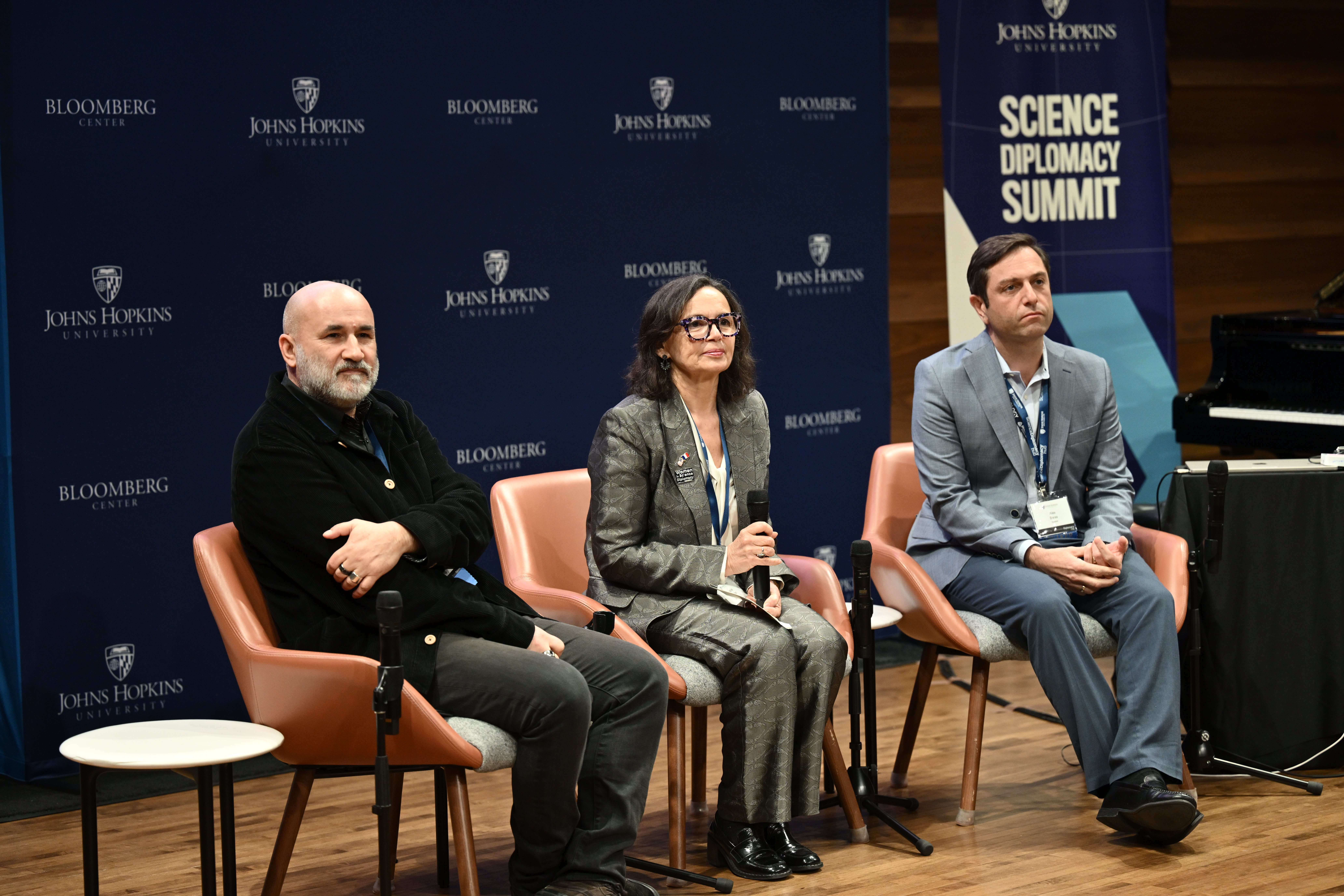5 ways AI is transforming health care worldwide
The tech is changing diagnostics, treatment and more

For Soumyadipta Acharya, a researcher at Johns Hopkins University, it’s hard to overstate the transformative potential of AI.
“It’s almost like the electricity of 100-150 years ago, how it transformed human civilization,” he said at the Johns Hopkins Science Diplomacy Summit 2025, which brought together nearly 1,000 ambassadors, diplomats, policymakers, researchers, scientists, and others to explore pressing scientific topics like climate change and quantum technology.
Acharya joined other experts to speak about the ways AI is already transforming health care and what the future will bring. Here are five breakthroughs to keep on your radar.
- Skin cancer detection from smartphones
If you spot a suspicious lesion on your skin, AI might save you a trip to the dermatologist. By snapping a photo with your phone, you could receive an instant, AI-generated diagnosis indicating whether a tumor is benign or malignant. The AI diagnostic tool can even distinguish between carcinoma or melanoma, two types of cancer.
Trained AI models can diagnose better than the eye of a trained human, according to Hugues Berry, a research professor and head of the Office of AI & Digital Sciences at Inserm, the French National Institute for Health and Medical Research. The tool could not only support earlier and more precise diagnoses, but could also open the door to proactive, at-home screening.
“This raises high hopes for prevention,” Berry said. “It means that you can be at home, sitting on your couch, and monitor your lesion as frequently as you want.”
- Personalization of cancer treatment
Once you’re diagnosed with cancer, oncologists must choose between treatment options like immunotherapy, radiotherapy, or surgery. While tumor type and stage inform these decisions, predicting how a specific patient will respond to a given treatment is more complex.
“You can have patients that have exactly the same disease, the same tumor, but some of them will have a better response to immunotherapy than others,” he said. “The question becomes, what is the best treatment for my patient?”
Doctors are now using AI tools to forecast treatment efficacy based on tumor images and patient data, enabling more targeted therapies, reducing unnecessary interventions, and improving patient outcomes.
- Speeding up analysis with AI-powered digital pathology
Used to diagnose blood disorders, blood cancers and infections, traditional peripheral blood smear analysis typically takes five to 10 minutes to complete as pathologists manually inspect slides to identify white blood cells. But AI systems can now scan and isolate relevant cells automatically, presenting high-quality images for expert review in a fraction of the time, said Alex Baras, director of computational pathology and informatics at Johns Hopkins.
“You have the ability to start measuring biomarkers with extreme precision and reproducibility, like the common biomarkers for breast cancer, for example,” Baras said.
These advances lay the foundation for more innovation and signal that overlaying analytics could be coming down the pipe, Baras added. Eventually, he said, AI could help identify biomarkers in images that indicate a condition, like how microscopes made it possible to better understand tumors.
- AI-driven telehealth for rural communities
“If you cannot get the expert to the patient, can you get the expertise there?” Acharya prompted.

With Intelehealth, the AI-assisted telehealth program Johns Hopkins graduate students helped develop, community health workers who haven’t completed medical training can now use AI tools to collect medical histories and assist with diagnosis. The program has already reached more than 12 million patients in India and other regions where access to physicians can be extremely limited.
AI can also help community health workers make more precise diagnoses through guided questioning.
For instance, if a 55-year-old man and an 11-year-old girl are both experiencing chest pain, doctors will have a very different set of initial hypotheses about the causes based on individual characteristics, Acharya said.
With real-time AI-assisted coaching, community health workers who haven’t received medical training can make more accurate diagnosis and treatment decisions.
- AI-enhanced mosquito surveillance to fight malaria
Effective malaria control starts with identifying which mosquito species are spreading disease.
“The reason we don’t have dengue and Zika outbreaks in [the U.S.] is because we have an extremely robust mosquito surveillance system in every district,” Acharya said.
But in Africa, community health workers must collect thousands of mosquitoes and then have epidemiologists look at each under a slide to identify the species. Thanks to AI, that’s changing.
There is now a low-cost, 3D-printed device paired with a smartphone and an AI model that can identify mosquito species on the spot, without needing cloud connectivity. This allows the system to work well in rural parts of Africa. In a yearlong trial in Uganda, 48 community health workers with no prior training identified more than 73,000 mosquitoes with accuracy and speed, even outperforming seasoned entomologists.